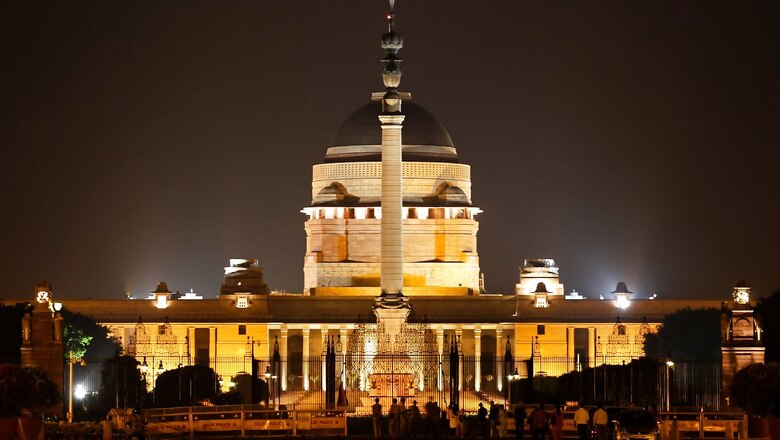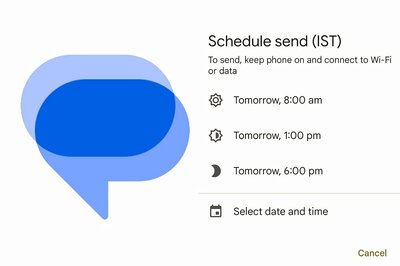
views
In its latest attempt to cobble together a united front, opposition parties will meet in Delhi on Wednesday in a bid to forge a consensus for fielding a joint candidate against the NDA in the presidential election slated for July 18. TMC chief Mamata Banerjee had recently written to 22 opposition parties, inviting them to be part of a platform against “divisive forces”. However, in the first jolt to the Opposition bloc, NCP supremo Sharad Pawar — who was being touted as the pick for the polls — has indicated that he is not keen to contest and is rather focusing his energies on trying to stitch together an alliance of opposition parties for the 2024 Lok Sabha elections.
The Election Commission of India announced the presidential elections to choose the successor of incumbent Ram Nath Kovind. Due to its strength in Lok Sabha and Rajya Sabha as well as in many state assemblies, the BJP is likely to ensure an easy victory for its nominated candidate.
The EC will allow the filing of nominations for the upcoming elections June 29, after it issues a notification on June 15, chief election commissioner Rajiv Kumar had said. The counting will take place in Delhi on July 21.
Here is all you need to know about the presidential polls, which is being held ahead of July 24 when the term of the current president will end:
Who can vote?
A total of 4,809 electors comprising 776 MPs and 4,033 MLAs will be voting. Voting for presidential election will take place in Parliament and the premises of state assemblies, while Rajya Sabha secretary-general will be the returning officer.
Members of the electoral college consisting of elected members of both houses of Parliament, and elected members of the legislative assemblies of all states, including the National Capital Territory of Delhi and the Union Territory of Puducherry, vote to elect the president.
The nominated members of either house or legislative assembly are not eligible to be included and, therefore, they are not entitled to take part in the election. Similarly, members of the legislative councils are also not electors. The final list of electors will be notified after the by-elections to three Lok Sabha seats.
Who can file nominations?
The nominations can be filed till June 29 after the issue of notification on June 15. Scrutiny of nominations will take place on June 30 and the last date for withdrawal of nominations will be July 2. Rules for the nominations will be notified on June 15.
Since 1997, there has been a contest between candidate from the ruling dispensation and the opposition. This was enabled by a change of law making it mandatory for 50 MPs to propose the candidate and another 50 seconding the candidature. This move is aimed at weeding out non-serious candidates.
The candidate needs to deposit an amount of Rs 15,000 as security. The security deposit was increased from Rs 2,500 to Rs 15,000 in 1997, when the total numbers of proposers and seconders were also increased from 10 each earlier.
A candidate has to be a citizen of India and should have completed 35 years of age, besides being qualified for election as a member of the House of the People. The president has a term of five years.
According to the EC, a person shall not be eligible if he or she holds any office of profit under the Indian government or the government of any state or under any local or other authority subject to the control of any of the state governments.
The EC also states that an elector cannot subscribe, whether as proposer or as seconder, more than one nomination paper, and if one does so, his or her signature will be invalid on any nomination paper other than the one first delivered. Also, not more than four nomination papers can be filed by or on behalf of a candidate or received by the returning officer.
What is the voting procedure?
Voting is through proportional representation using a single transferable vote system and by secret ballot. Announcing the elections, CEC Rajiv Kumar said, “The Constitution has expressly provided that election to the office of President shall be by secret ballot. Therefore, the electors are expected to scrupulously maintain secrecy of vote. There is no concept of open voting in this election and showing the ballot to anyone under any circumstances in the case of presidential and vice-presidential elections is totally prohibited.”
A ballot paper is cancelled by the presiding officer if there is any violation in the voting procedure. The marking of vote can be done only with the particular pen provided by the presiding officer to electors.
Kumar said, “It is the resolve of the EC that there should be no malpractice of any kind in this election for the highest office in the country and if anything is found, it is a ground for election petition in the Supreme Court and could lead to cancellation.”
According to Section 18 of the Presidential and Vice-Presidential Elections Act, 1952, the offence of “bribery” or “undue influence” as defined in Sections 171B and 171C of the IPC, by the returned candidate or any person with the consent of the returned candidate are among the grounds on which the election can be declared void by the Supreme Court in an election petition.
How does the calculation work?
The value of the vote of an MP has gone down to 700 from 708 in the presidential polls this time due to the absence of a legislative assembly in Jammu and Kashmir. The value is based on the number of elected members in legislative assemblies of states and UTs, including Delhi, Puducherry and Jammu and Kashmir, according to the EC.
In states, the value of vote of each MLA varies according to the population. For example, in Uttar Pradesh, the value of vote of each MLA stands at 208, followed by 176 in Jharkhand and Tamil Nadu. In Maharashtra, it is 175. In Sikkim, the value is seven, while it is nine in Nagaland and eight in Mizoram.
The BJP looks to be in a comfortable position to ensure the victory of its nominated candidate. The ruling NDA has 440 MPs while the opposition UPA has around 180 MPs, besides 36 MPs of the TMC, which normally supports the opposition candidate.
If calculated roughly, the NDA has around 5,35,000 votes out of a total of 10,86,431 votes of all electors. This includes 3,08,000 votes with the support of its MPs and allies.
Among states, the BJP has the maximum of 56,784 votes from UP where it has 273 MLAs. Each MLA in UP has the maximum vote of 208. The NDA will get its second-highest votes among states from Bihar where with 127 MLAs, it will get 21,971 votes as each legislator has 173 votes, followed by 18,375 votes from Maharashtra where it has 105 MLAs and each has 175 votes. With 131 MLAs, the NDA will get 17,161 votes from Madhya Pradesh, 16,464 votes of 112 MLAs from Gujarat and 15,982 votes of its 122 MLAs in Karnataka. The UPA has a little over 1,50,000 votes from MPs as well as MLAs. Opposition candidates in the past, too, have got a little more than three lakh votes.
How does counting take place?
The counting is done once all ballots from states are brought in. This time, the counting will take place in the national capital on July 21. Kovind’s term ends on July 24, and the new president will be sworn in on July 25.
What are the stakes?
All eyes are on who the BJP’s choice will be as the party and its allies have a clear advantage. Though the National Democratic Alliance has fewer MLAs than in the 2017 presidential polls, the number of MPs has gone up.
A BJP leader said close to 50 per cent of votes in the electoral college are with the NDA. The alliance is hopeful of support from independent regional parties such as the ruling YSRCP in Andhra Pradesh and BJD in Odisha. The BJP is also counting on support from the AIADMK, its ally in the last Tamil Nadu assembly polls.
The opposition is likely to put up a joint candidate despite not having the numbers. Sources said leader of opposition in Rajya Sabha Mallikarjun Kharge has reached out to other LoPs of some opposition parties to consult on the matter. “Consultations for the presidential election have begun among various opposition parties,” a senior opposition leader told PTI.
What are the preparations this year?
CEC Rajiv Kumar has said the EC will be following all Covid-19 safety protocols during polling as well as counting. The whole voting process will be recorded and no political party will be allowed to issue any kind of whip.
What happened in previous elections?
In the 2017 election, Kovind became the president after defeating joint opposition candidate Meira Kumar. He polled 7,02,000 votes compared to Kumar’s 3,67,000 out of a total of 10,69,358 votes.
There has only been one presidential election in 1977 where Neelam Sanjiva Reddy was elected unopposed, after the candidatures of 36 of the 37 candidates who filed nominations were rejected. Rajendra Prasad was the only president to get two full terms and Zakir Hussain and Fakhruddin Ali Ahmed could not complete their terms.
(With PTI inputs)
Read all the Latest News , Breaking News , watch Top Videos and Live TV here.




















Comments
0 comment